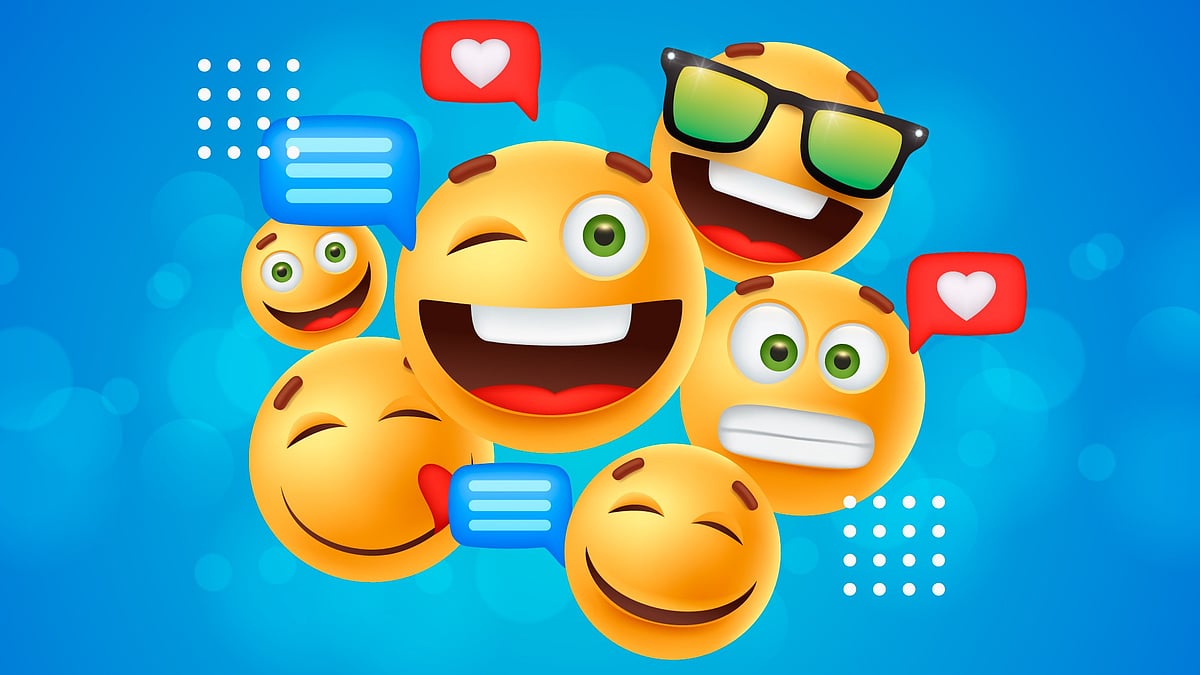World Emoji Day 2025: Are Emoticons Gen Z's New Love Language?
On World Emoji Day (July 17), we decode the emoji-first language shaping how Gen Z speaks, feels, and connects

Open any Gen Z group chat and it might read like pure emoji chaos: (💀, 💎). To outsiders, it’s baffling. To them, it’s a whole conversation—funny, dramatic, layered with meaning. No words needed. It's time to ask: Why is Gen Z using emojis instead of words? What makes a skull more expressive than typing “LOL”?
For this generation, emojis aren’t just add-ons or reactions—they are the message. A string like (🫠, 😣, 😭) can say “I’m overwhelmed, exhausted, and somehow still laughing” faster—and funnier—than a paragraph ever could. While older generations may see it as the death of language, Gen Z sees it as an upgrade.
Language isn’t disappearing. It’s just evolving—with visuals leading the way. And for Gen Z, the question isn’t why use emojis.
It’s why not?
Text alone feels flat
Tone can easily be misinterpreted in plain text. Is that “OK” reassuring or cold? Is “sure” sincere or sarcastic?
Emojis help close that gap. A 😭 adds dramatic flair, 🙃 hints at passive sarcasm, and a simple 🫶 can make a sentence feel warmer and more human. They’re emotional amplifiers—tiny symbols that make sure the message lands the right way.
Bianca Arora, 24, a content creator, explains how emojis help her communicate better, “Emojis are a game-changer for me when I'm texting. Honestly, it's so easy for things to get lost in translation when you're just typing words. You know how it is – what you mean can be totally different from how someone else reads it. Emojis just cut through all that and help get the emotion across way better. Plus, they're just faster and more fun than trying to spell out exactly how you're feeling. But really, the main reason I use them is to avoid those awkward misunderstandings. They're a lifesaver for making sure my message comes across just right.”
They're quick, aesthetic
Why use five words when two emojis will do? In a fast-scrolling, hyperconnected world, brevity is power. Emojis let Gen Z get straight to the point—without losing nuance.
They're also visual by nature, which appeals to a generation raised on Instagram, TikTok, and visual storytelling. A tweet with a crying emoji or a peach instantly stands out. A caption with sparkles ✨ or a well-placed 🫠 feels curated, cool, and complete.
Bhavika Dogra, 24, Senior PR Executive at Dot Media, shares how emojis have become an extension of her expression, “Honestly, im a big emoji user and i totally get why emojis have become a thing! For me, emojis are more than just fun and quick - they help express emotions in a way words can't. Like, the 🤗 emoji is a warm hug for me, and it instantly makes me feel good. Emojis add tone and personality to text, which can be lost in plain words!! They’re lowkey iconic and they help us vibe with each other better. Plus, they're just fun to use. No wonder emojis have become a natural part of communication..In my office at Dot Media, we’ve even brought that vibe into our space with boards, posters and signs full of bold emojis and playful messages. It’s fun, expressive and helps us connect creatively every day.”
Emojis are more than decoration—they’re emotional shortcuts. Mini-sentences. Reaction, tone, and irony, all packed into a single symbol. No overthinking, no over-explaining—just instant impact.
Irony in icons
Irony is the default mode of Gen Z communication. So when emojis started feeling too sincere—or worse, co-opted by older generations—they weren’t abandoned. They were reprogrammed.
Take 🙂. Once a symbol of polite cheer, it now often masks frustration or passive-aggressive calm. The classic red heart ❤️️? Swapped out for gentler versions like 🩷 or 💗—softer, more aesthetic, less intense.
This isn’t rejection. It’s reinvention.
Every year, new emojis land on our keyboards—beans, bubbles, trolls—and Gen Z instantly makes them mean something more. The melting face 🫠, originally for physical heat or awkwardness, now signals emotional collapse, existential dread, or a comedic sense of defeat. All with a wink. They’re digital shorthand, and Gen Z is writing the rulebook.
Emojis > Words
There are moments when words fall short—awkward silences, dramatic eye-rolls, or chaotic emotions. Emojis step in.
A message like “He didn’t text back…” hits different when followed by 🙃💔🧍. That trio says it all: disappointment, cringe, and emotional stillness—no over-explaining required.
Gen Z doesn’t just type; they perform emotion. Emojis are the stage directions in their daily drama.
Hitika Sachdev, 24, content creator, sums up just how central emojis have become, “Honestly, emojis have become my second language at this point. I think they just get me when words feel too flat or serious. Like, instead of saying “I’m crying,” I’d rather just drop 🥲 or 😭 and people instantly feel what I mean. It’s not just about being fun you know; emojis make conversations softer, more expressive, and way more personal. And as a creator, it helps me connect better. You could say Gen Z doesn’t just text, we vibe… and emojis are how we do it hehe🤭.”
In code, connection?
Because for Gen Z, emojis are not a trend—they’re a toolkit. They soften harsh texts, add humour, speed up replies, and bring colour to conversations. They help users feel seen and heard in a digital world where tone often disappears.
So next time you see a message with three skulls and a melting face, don’t be confused. They’re not panicking—they’re probably just laughing.
RECENT STORIES
-
-
-
-
-